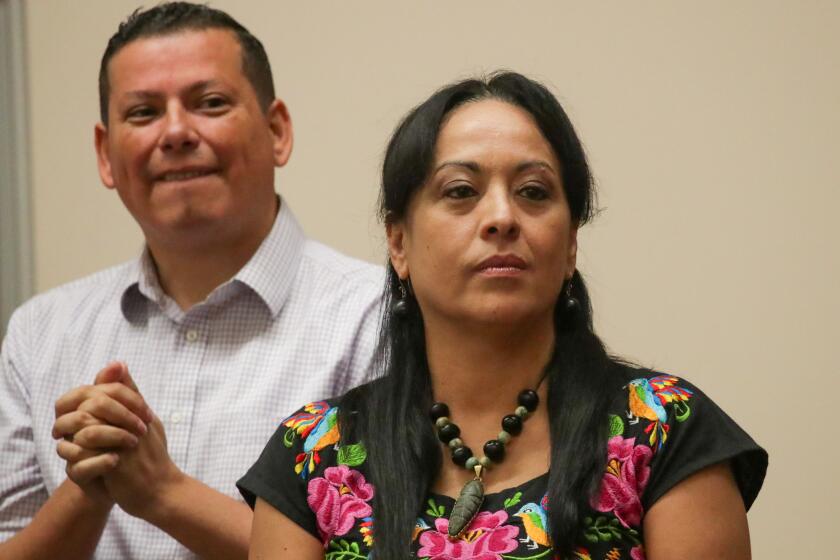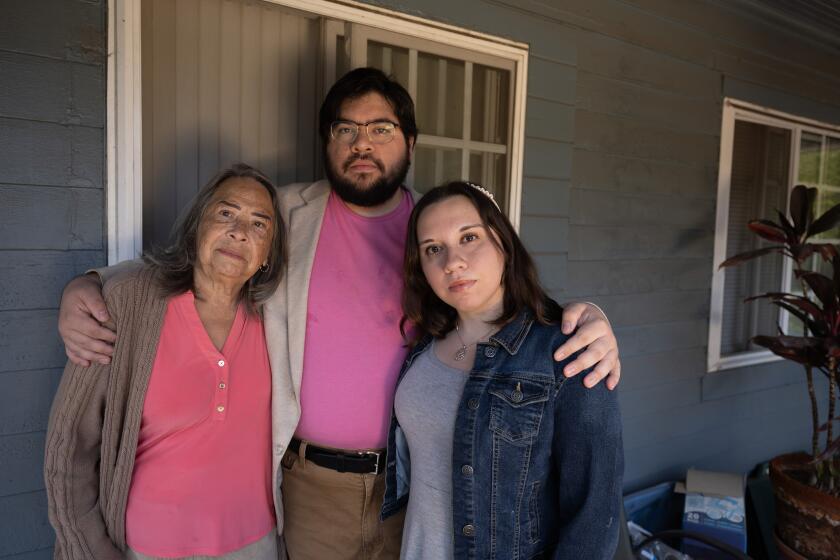Prop. 46 is on the ballot to pick up Legislature’s slack
Proposition 46 is a classic example of a citizens’ initiative that should never have been on the ballot.
It’s also a classic example of why some initiative system is needed so citizens can do their own lawmaking when the elected lawmakers won’t.
The heated issue that Prop. 46 addresses — medical malpractice payouts — should have been resolved by the governor and Legislature.
But moneyed interests — the big-time campaign contributors — pretty much rule the roost in Sacramento, or any capital. These power brokers, euphemistically known as “stakeholders,” usually decide whether there’s to be any compromising. And, if so, they do the compromising themselves.
Legislators, at least since the unfortunate advent of term limits, too often possess neither the knowledge nor the courage to buck the interests and do what might be right.
And let’s be clear on another sordid truth: Those “citizens” who sponsor initiatives? They’re usually moneyed interests too. Ordinarily citizens — at least those who aren’t mega-rich — can’t afford the many millions necessary to run a successful initiative campaign.
So back to Prop. 46. It’s sponsored by lawyers, consumer activists and some malpractice victims. But it’s heavily opposed by the medical profession, insurers, counties, clinics. Name it.
The ballot measure would raise the relatively low limit on non-economic damage awards — pain and suffering — in medical malpractice cases. It also would require drug and alcohol testing of doctors affiliated with hospitals. And to fight pain pill addiction, it would force doctors to use a state database that tracks patients’ prescription histories.
What’s a governor and Legislature for if they’re incapable or unwilling to deal with medical malpractice? Never mind.
The main goal of Prop. 46 — for lawyers, anyway — is to increase the cap on pain and suffering awards. It was set at $250,000 back in 1975, the first year Jerry Brown was governor, because doctors were threatening to close up shop. Malpractice awards were rising and the docs’ insurance premiums were skyrocketing. The cap is still $250,000.
If that $250,000 had been adjusted for inflation over the last 39 years, it would be roughly $1.1 million today.
Prop. 46 would jack up the cap to $1.1 million and adjust it each year for inflation.
Brown, many years later, had a change of heart about his signing of the 1975 act.
In 1993, when he was out of office, Brown wrote consumer activist Ralph Nader — according to a document provided by the pro-46 side and not disputed by the governor’s office — “strongly” recommending against adopting a California-style medical malpractice cap nationwide.
California, Brown wrote, “found that insurance company avarice, not utilization of the legal system by injured consumers, was responsible for excessive premiums.”
“Saddest of all,” Brown continued, “MICRA [the Medical Injury Compensation Reform Act] has revealed itself to have an arbitrary and cruel effect upon the victims of malpractice. It has not lowered healthcare costs, only enriched insurers and placed negligent or incompetent physicians outside the reach of judicial accountability.”
Brown has not taken a position on Prop. 46.
The Democratic governor chooses his fights cautiously. He’s running for a record fourth term — albeit against weak opposition — while promoting ballot measures for a $7.5-billion water bond and a mandatory “rainy-day” budget reserve.
When the Prop. 46 drafters made it clear they intended to pound ahead with their ballot measure, state Senate leader Darrell Steinberg (D-Sacramento) tried to forge a legislative compromise.
According to Steinberg associates and pro-46 sources, the Senate leader suggested doubling the cap to $500,000 with no future inflation adjustments for five years, and dropping completely the drug testing and prescription database requirements. The 46 side was agreeable.
“We were willing to avoid the whole ballot measure,” says Bob Pack, a non-lawyer and malpractice victim who is a driving force behind the initiative. “But they [opponents] were not willing to negotiate or offer one dime.”
“Not accurate,” insists Dustin Corcoran, chief executive officer for the California Medical Assn. “That offer was never made to me or anyone else that I’m aware of.”
Regardless, Steinberg saw no hope for a deal and dropped the idea, even though the legislation could have been passed on a simple majority vote.
Pack, a wealthy San Francisco Bay Area technology entrepreneur, embarked on a medical malpractice reform crusade a decade ago after his two children — Troy, 10, and Alana, 7 — were killed by a driver stoned on prescription drugs chased with vodka. The kids were walking with their mom to an ice cream store.
Turns out the driver had been “doctor shopping” to acquire hundreds of addictive painkillers.
When Pack tried to find an attorney to sue the giant medical group that had prescribed the pills willy-nilly, he learned the kids weren’t worth much in court. They had no income, so he couldn’t sue for lost wages. They also had no long-lasting medical bills, because they were dead.
That’s the way the California system works. There’s no limit on economic damages. But first you need income to lose or high medical costs. That basically leaves out kids, retired people, stay-at-home moms and poor folks — plus the deceased.
The opponents — docs, hospitals, clinics, governments — fear rising costs for malpractice insurance. They argue that would force up the cost of healthcare, even make it inaccessible for many. And it would enrich lawyers, who generally bank one-third of the damage awards.
But the nonpartisan Legislative Analyst’s Office pegs the increased healthcare tab at relative peanuts: between 0.1% and 0.5%.
And, yes, lawyers would make more money. But victims would get much, much more — and some semblance of justice.
More to Read
Sign up for Essential California
The most important California stories and recommendations in your inbox every morning.
You may occasionally receive promotional content from the Los Angeles Times.











